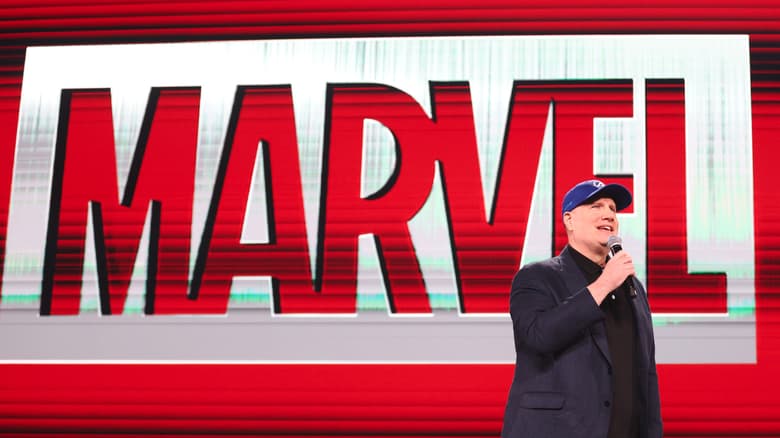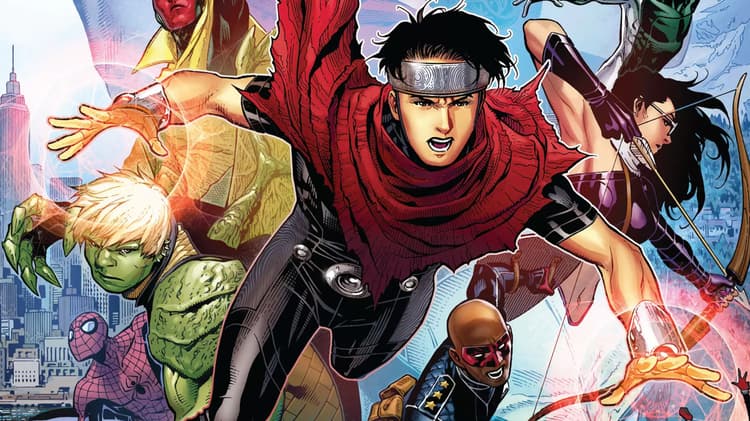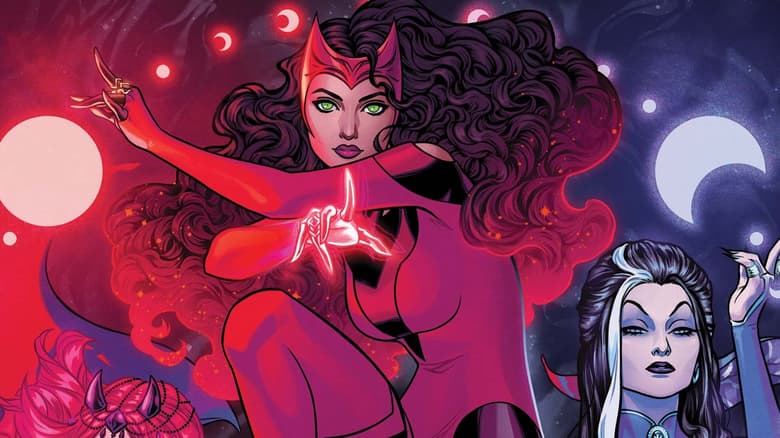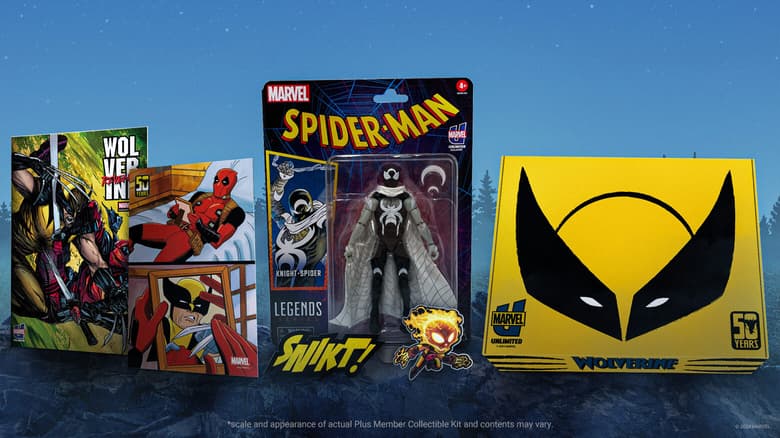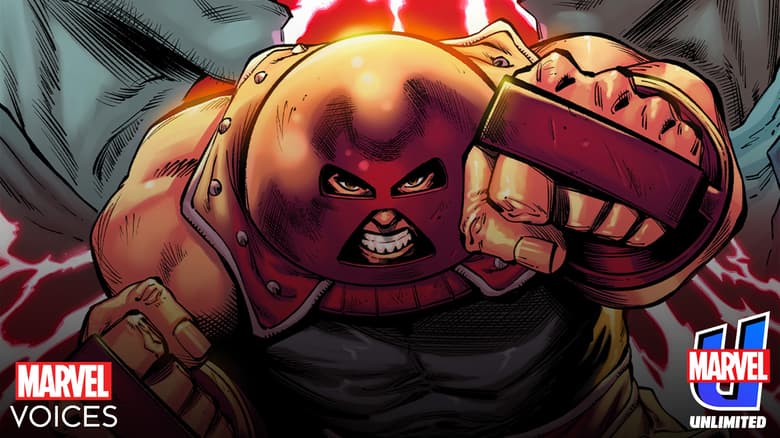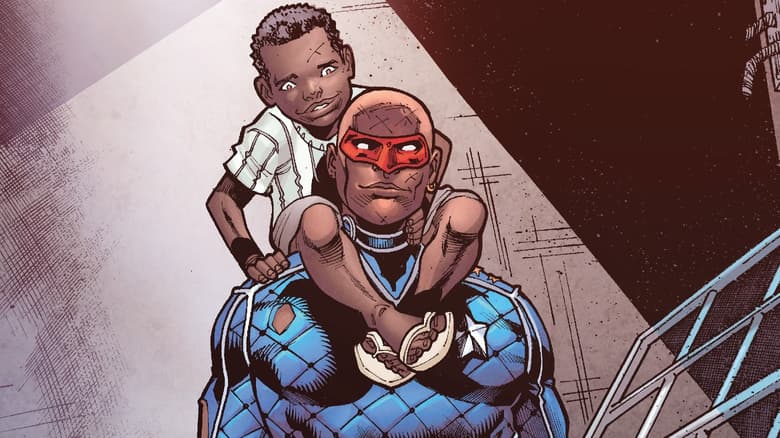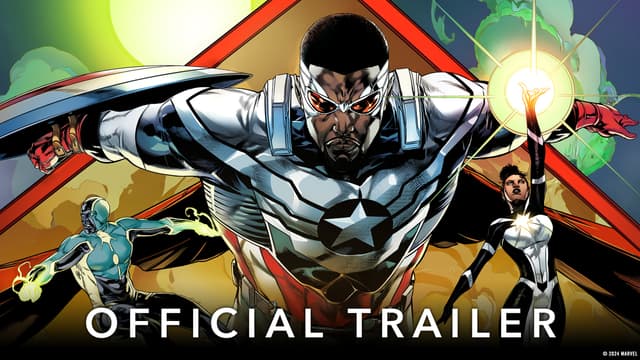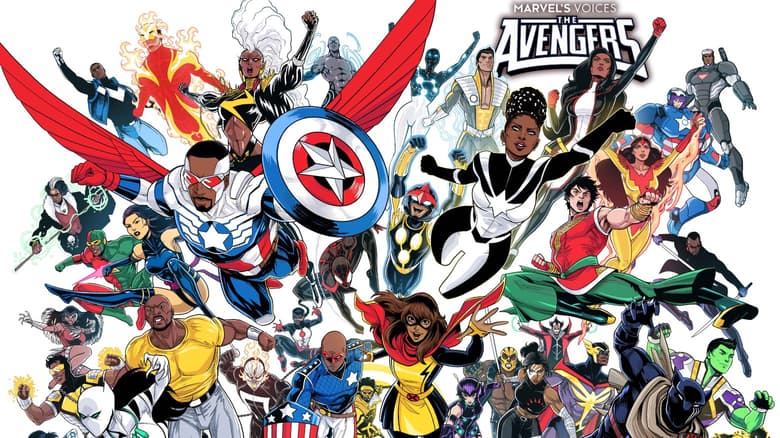'Marvel's Voices': De-Coding Comics with Angélique Roché
The host of 'Marvel's Voices' dives deep into the history of the Comics Code Authority and its impact on LGBTQIA+ representation in comics.
This essay originally appeared in MARVEL'S VOICES: PRIDE (2022) #1. Pick up your copy today!
Since the creation of what is considered the first super hero comic in the late 1930s, the comics industry has gone through a number of evolutions—and, at times, revolutions. From newspaper strips, consolidated reprints sold in department stores, and star-spangled care packages to the troops, to protests, book burnings, and back, the journey of the mighty comic book industry has been nothing less than exciting. But no change in the industry was more impactful than the creation of the Comics Code Authority (CCA).
So, you're asking why you're getting this little history lesson in the middle of a celebration of our LGBTQIA+ community and the incredible characters and creators featured in MARVEL'S VOICES: PRIDE (2022) #1. Well, in each Marvel’s Voices book we like to include a little bit of “history” to put the book, its stories, and the significance of representation in perspective.
While the comics medium as we know it dates back to the 1930s, the year 1989 marked a significant moment for LGBTQIA+ characters in mainstream comics. At a time when the industry was rebounding from the Black and White Boom and Bust—see the history of the original publication of the Teenage Mutant Ninja Turtles (1984) and the industry’s attempt to duplicate its success (you’re welcome)—the CCA was undergoing major changes to allow comics to be more competitive with other forms of media. So the governing body that had been regulating the seal of approval that symbolized the gold standard in the comic book industry since 1954 made a huge shift in how and what types of stories were regulated. While it wasn’t the first time the CCA amended the Comics Code—most notably it made changes in 1971—these changes specifically impacted the representation of queer characters in comics.
Before 1989, the Comics Code expressly disallowed any suggestion of homosexuality in comics, outright banning LGBTQIA+ characters from any book bearing the CCA seal. The code even went a step further by encouraging stories to promote cis-gender hetero-normative nuclear family structures. In addition, the Comic Code expressly disallowed things like the portrayal of drug use and negative depictions of law enforcement among others.
That did not stop the House of Ideas and its creators from ensuring that LGBTQIA+ characters existed in the Marvel Universe. By using clever analogies, expertly drafting dialogue, wordsmithing captions, and crafting well-placed images, creators ensured the queer community did exist—within the margins, hidden in the subtext. During this time, terms like “true self,” life or chosen “companion,” “partner,” and “soulmate” all came to mean something more depending on the character and the circumstances.
Whether their identity was layered in coded language or resided in the intent of the co-creators, these coded characters—while not able to expressly come out as queer—date as far back as the 1960s, as in the example of Jonathon Clay, the Rawhide Kid. That all changed In 1992. Under the editorial direction of Bobbie Chase and her openly gay assistant editor, Christian “Chris” Cooper, Northstar became the first openly gay character in the Marvel Universe. In ALPHA FLIGHT (1983) #106, the formerly coded character, loudly exclaims his sexual orientation to the world. In the years that followed, Marvel would not only see new LGBTQIA+ characters like Victoria Montesi—Marvel’s first openly lesbian character, created by Chris Cooper—but would incrementally see Marvel’s coded or sometimes simply intended queer characters explicitly come out of the closet.
These character story arcs not only included the acknowledgment of their sexual orientation and sometimes previously unconfirmed or ambiguous gender identities, but the ability for each of them to live their lives out loud. For many, those lives included the ability to have genuine relationships and expressly let love win. As a member of the LGBTQIA+ community, I know that having the ability to let love win and the space to embrace yourself is not only remarkable but in many ways revolutionary. So I wanted to highlight four couples that feature characters who were created before 1989 but have since openly identified as members of the LGBTQIA+ community and established relationships that reflect their true identities.
Venomm & Taku
From the very beginning, writer Don McGregor intended for the unlikely couple of Horatio Walters and Taku to not only identify as gay men, but become an interracial gay couple. Horatio “Venomm” Walters, not to be confused with alien symbiote Venom, first appears in JUNGLE ACTION (1972) #8, as part of the “Panther’s Rage” story arch, merely two issues after Don McGregor took over as the writer of Black Panther’s first solo book.
The brilliant outcast spent his life as a loner after being bullied and having acid thrown on his face as a young man. As an adult, Venomm begins to experience kinship with snakes, relating to the misunderstood reptile and slowly withdrawing from people.
He eventually falls in with the villain Erik Killmonger, joining him in his attempts to conquer Wakanda. During the battle of Wakanda, Venomm is captured and meets T’Challa’s chief advisor Taku. Taku was first introduced in AVENGERS (1963) #68—written by Roy Thomas and Sal Buscema—as T’Challa’s most trusted advisor.
When we first meet Venomm, he is standoffish and tight-lipped. But Taku is able to get Venomm to open up to him and talk about his past, including the incident that resulted in his retreat from society. As was McGregor’s plan, the two develop an unlikely bond. Eventually, Horatio becomes a member of Wakandan society and even assumes a “regular” life in the African nation as one of the few outsiders.
In BLACK PANTHER: PANTHER'S PREY (1991) #2 written by Don McGregor with pencils by Dwayne Turner, the story expressly alludes that Venomm and Taku are more than just friends and have an intimate relationship as “companions.” That relationship has since become more defined and concrete in the Marvel Universe, and Danny Lore and Lucas Werneck’s story in this very issue brings the characters fully out of the closet for the first time.
Julie Power & Karolina Dean
Unlike Venomm and Taku, Karolina Dean of the Runaways and Julie Power of the Power Pack were created decades apart. Nevertheless, because time in the comics universe is relative, Karolina Dean (2003) and Julie Power (1984) were a short-lived couple. Their relationship also signified the first time Julie was expressly written as queer in the Marvel Universe.
Their underlying attraction was first established in the 2005 Runaways series, written by Brian K. Vaughan with art by Adrian Alphona. While Karolina Dean, co-created by Vaughan and Alphona, identified as queer early in her character’s story; the same was not true for Julie. Julie Power, a.k.a. Lightspeed—co-created by legends Louise Simonson and June Brigman—remained coded until her sexual identity was expressly addressed in AVENGERS ACADEMY (2010) #23.
The pair eventually split up, and Karolina Dean began a relationship with fellow Runaway Nico Minoru. We see Julie’s reaction to the breakup in FANTASTIC FOUR (2018) #12.
Nico and Karolina’s relationship was not only featured in the most recent RUNAWAYS (2017) series written by Rainbow Rowell but was also included in MARVEL'S VOICES: PRIDE (2021).
Moondragon & Phyla-Vell
Another couple whose creation is separated by decades: Phyla-Vell and Moondragon are currently a couple in the Marvel Universe. While Phyla-Vell was not created by Peter David and Paul Azaceta until 2003, the character Heather Douglas, a.k.a. Moondragon—created by Bill Everett, Mike Friedrich, and George Tuska—was first introduced in IRON MAN (1968) #54.
The daughter of Arthur Douglas, as known as Drax the Destroyer, Moondragon (who identifies as bisexual) has dated a number of heroes in the Marvel Universe, including Daredevil and Thor. We first see confirmation of Moondragon’s bisexuality in CAPTAIN MARVEL (2000) #32 when Moondragon kissed Marlo Chandler. The two had a short relationship, with Marlo eventually realizing she still has strong feelings for her ex, Rick Jones. While the relationship lasted only a couple of months, Moondragon was heartbroken, even lying to both Marlo and Rick to explain away the relationship and make the breakup easier. Nevertheless, she agreed to remain friends.
Moondragon met Phya-Vell while fighting alongside her brother Genis-Vell, also known as Captain Marvel (Phyla and Genis are the children of Mar-Vell, the original Captain Marvel). It was established early on that Phyla-Vell identifies as a lesbian. Shortly after Moondragon’s break-up with Marlo—mere panels—Phyla-Vell expressed interest in Moondragon, and the two have been by each other’s side ever since.
Brian Falsworth & Roger Aubrey
While the romantic relationship between Brian Falsworth and Roger Aubrey is not one that was allowed to be played out on the panels and pages of the comics, it does represent a significant coded relationship that was made explicit after the shift in the comics code. And it is in fact one of the chronological oldest same-sex relationships in the Marvel Universe.
Their relationship begins in the comics as a friendship that started out as classmates and eventually continued when the two were members of the Invaders. The fact that their relationship was more than just a friendship is periodically hinted at in a number of issues, such as INVADERS (1975) #34.
Brain Falsworth also known as Union Jack, is the second hero to go by the title, inheriting it from his father. The British hero fought alongside Captain America on the WWII era super hero team The Invaders formed to fight super-powered Nazi villains to help bring down Hitler and the Third Reich.
Co-created by Roy Thomas and Frank Robbins, Falsworth first appeared as the hero Destroyer in INVADERS (1975) #18. He is best friends with Roger Aubrey, as known as Dyna-Mite and subsequently Mighty Destroyer. While Aubry was created by Bob Powell, Roy Thomas, and Frank Robbins in 1976, the character is later identified as Dyna-Mite in ALL-WINNERS COMICS (1941) #8. The two friends would eventually fight alongside each other during and after the war, both joining the V-Battalion, a team dedicated to preventing another leader like Hitler from threatening Europe.
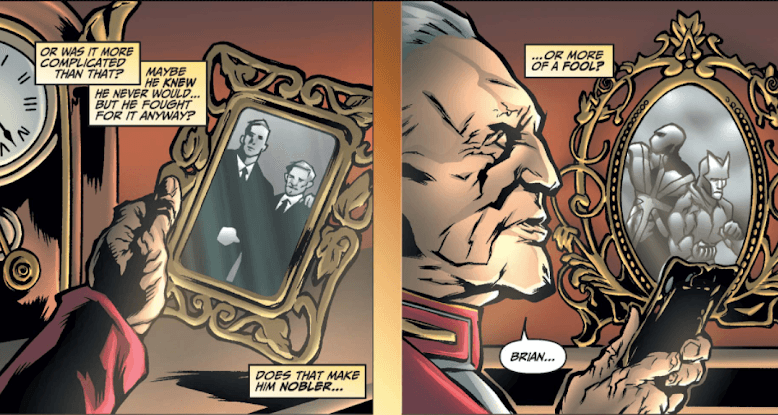
It is revealed in CAPTAIN AMERICA (1968) #253 that while Brain survived the war and fought for many years after, hat he tragically died in a car accident in 1953. Roger was also involved in the accident but survived only to have Brain die in his arms. Over twenty years later, in CITIZEN V AND THE V-BATTALION (2002), writer Fabian Nicieza hints that Brain and Roger were in fact lovers.
While the Comics Code was abandoned in the early aughts, these characters and their subsequent “coming out” moments stand as testimony of the continuing evolution of queer identity in comics. These four unique and vastly different relationships represent only a small fraction of the queer stories that have been created and continue to be created in the Marvel Universe. And while many of these moves were done by allies—creators who identify as cis-gender and straight—we are now seeing a whole new class of writers, artists, and editors who are members of LGBTQIA+ community lending their voices and experience to these narratives.
I know we say it a lot but for Marvel and especially for the Marvel’s Voices team, whether it is our podcast, digital, comics, or otherwise, we truly are committed to Marvel reflecting the world outside of ALL of our windows. In just this issue of MARVEL'S VOICES: PRIDE, we not only welcomed five new queer characters to the Marvel Universe, get to see two established Marvel characters (Taku and Venomm) start a new chapter living out loud for the first time but also so many others continue their journeys, paving the way for the characters to come.
So stay tuned, update that pull list, and make sure your subscriptions are renewed because there is so much more in store.
Want to learn more about these characters' journeys? Read more on Marvel Unlimited.
Pick up your copy of MARVEL'S VOICES: PRIDE (2022) now, as well as the newest issue of MARVEL'S VOICES: PRIDE (2022) #1, now on sale!
You can read more essays on Celebration of Legacy from Marvel's Voices, available exclusively on Marvel.com!
The Hype Box
Can’t-miss news and updates from across the Marvel Universe!
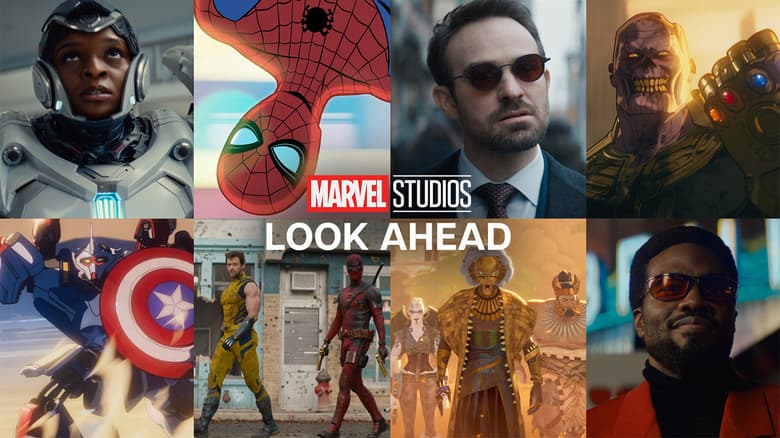
TV Shows
Disney+ Debuts ‘Look Ahead’ Teaser for Upcoming Marvel Studios Titles
